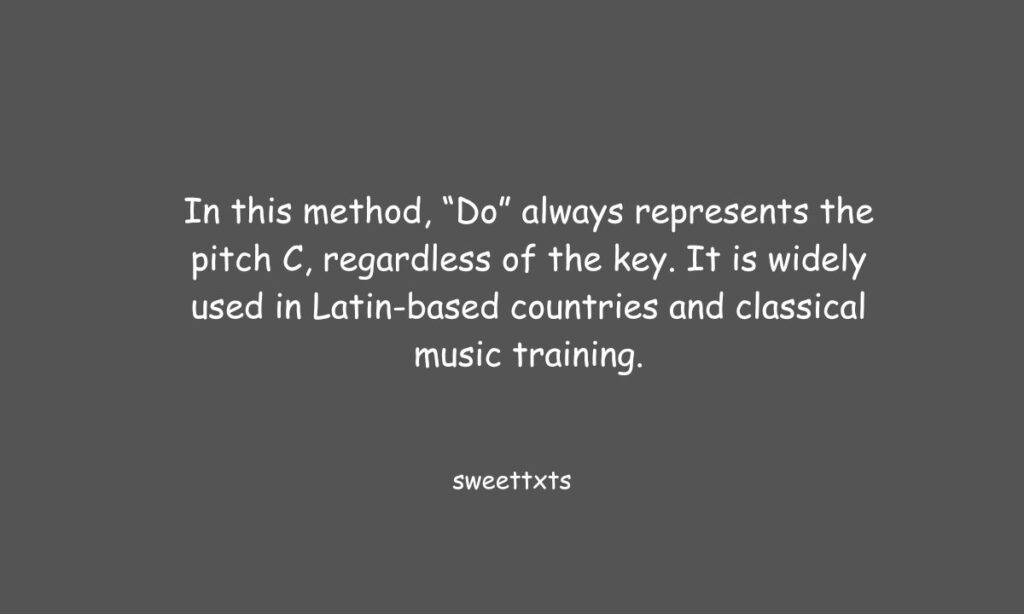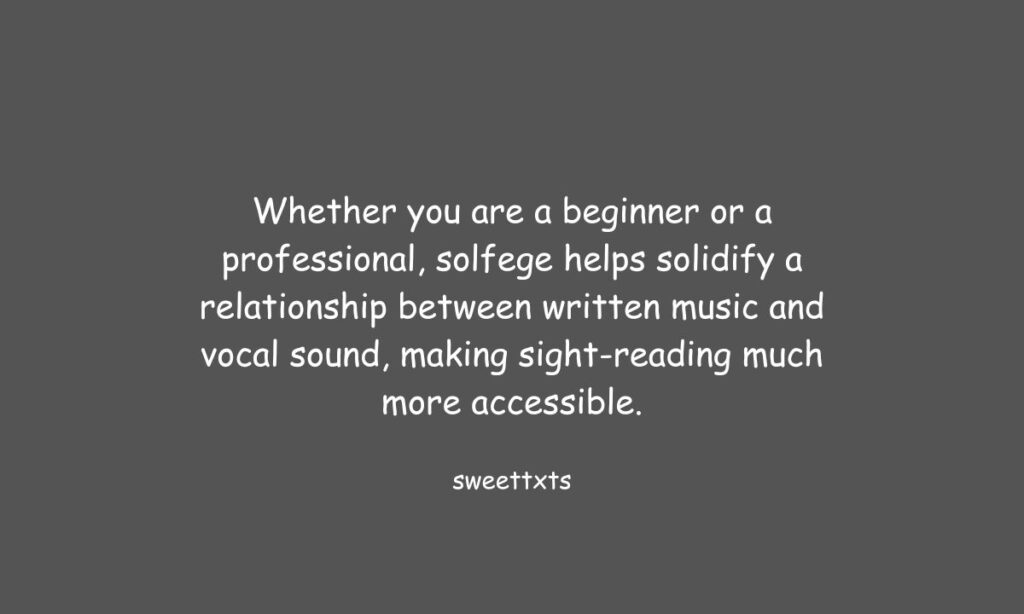Solfege is a way to learn music using simple sounds like Do, Re, Mi. These sounds help children know the notes and sing them correctly. Many schools use solfege to teach music from the beginning.
The word hiatus means a short break or stop. Instead of using hiatus, we can say words like pause, rest, or time off. These words are easy and help everyone understand when something stops for a while.
This article shares the meaning of solfege and also gives 11 elegant alternatives to hiatus. These words help in speaking and writing better in school and daily life.
What Does “Solfege” Mean?
Solfege, also spelled solfège, is a method used to teach pitch and sight-singing in Western music. This system assigns specific syllables to each note of the scale, helping musicians identify pitch relationships and intervals by ear. The standard syllables used are:
- Do
- Re
- Mi
- Fa
- Sol (or So)
- La
- Ti
- (and back to Do)
These syllables correspond to the notes of a major scale. When you hear the phrase “Do-Re-Me,” you are engaging with solfege, whether or not you realise it.
Origin and Evolution of Solfege

The solfege system dates back to the 11th century, originating with Guido of Arezzo, a Benedictine monk. He developed this method as a pedagogical tool to make it easier for students to sing and learn music. The syllables were taken from the Latin hymn Ut Queant Laxis, where each phrase starts on a successively higher note.
Interestingly, the original syllable “Ut” was later replaced by “Do” for ease of singing, and “Si” was changed to “Ti” in English-speaking countries to ensure each syllable started with a unique letter.
Why Is Solfege Important?
Solfege plays a fundamental role in music education because it teaches:
- Ear training
- Pitch recognition
- Interval awareness
- Musical literacy
Whether you are a beginner or a professional, solfege helps solidify a relationship between written music and vocal sound, making sight-reading much more accessible.
Types of Solfege
1. Fixed Do Solfege
In this method, “Do” always represents the pitch C, regardless of the key. It is widely used in Latin-based countries and classical music training.
2. Movable Do Solfege
Here, “Do” is the tonic of the key, and the rest of the syllables follow accordingly. This system is used more frequently in English-speaking regions and is more adaptable for learning functional harmony.
Solfege Meaning in Text*
In written or digital conversation, especially among musicians, “solfege” in text often signifies more than just a musical method. It might represent:
- A structured system
- An entry-level concept for learning
- Discipline in pitch identification
- Vocal training shorthand
For example, in a WhatsApp message between two vocal students, one might write:
“Let’s start with solfege before the harmony exercises.”
Here, the word is used to indicate the beginning step in musical preparation.
Additionally, “solfege” may be used metaphorically in motivational or casual speech to describe building blocks or fundamentals of any skill:
“I need to go back to solfege with my writing — just the basics.”
In this context, solfege symbolises core fundamentals—a metaphor for rebuilding from the ground up.
Solfege Meaning: In Everyday Usage

Though inherently musical, the term has increasingly made its way into casual speech and creative writing to describe anything fundamental, structured, or rhythmic.
For example:
- “Her speech had a solfege-like rhythm to it.”
- “Let’s solfege our way through this project.”
These usages reflect the term’s elegant, academic, and rhythmic connotations, even outside music.
Hiatus Meaning — And Why It Matters
Before diving into its alternatives, let’s understand the base term.
A hiatus refers to a temporary break, pause, or interruption in continuity. It is commonly used in both formal and informal writing and can apply to work, studies, conversations, series, publications, or even relationships.
Example:
- “The podcast will return after a short hiatus.”
- “She took a hiatus from social media to focus on herself.”
Despite being perfectly functional, “hiatus” may feel too formal, clinical, or even overused. Below are 11 refined alternatives you can use depending on the tone and purpose of your communication.
11 Alternatives to “Hiatus Meaning” with Tone & Context
1. Pause
Tone: Neutral, casual
Use: Everyday conversation
Example:
“I’m taking a short pause from Instagram.”
2. Break
Tone: Casual
Use: Informal situations
Example:
“She’s on a break from university until fall.”
3. Sabbatical
Tone: Professional, academic
Use: Work or research context
Example:
“He’s on a one-year sabbatical to write a book.”
4. Intermission
Tone: Artistic, theatrical
Use: Creative projects, performances
Example:
“There’s a brief intermission before the second act.”
5. Time Off
Tone: Relaxed, corporate
Use: Workplace or family conversation
Example:
“I’m taking some time off to recharge.”
6. Respite
Tone: Poetic, thoughtful
Use: Emotional or mental health settings
Example:
“She found a moment of respite in the countryside.”
7. Interval
Tone: Formal, structured
Use: Scientific, sports, or music
Example:
“There was a short interval between sessions.”
8. Leave of Absence
Tone: Administrative, professional
Use: HR, academic institutions
Example:
“He’s on a leave of absence due to health concerns.”
9. Downtime
Tone: Modern, tech-savvy
Use: Media, IT, personal well-being
Example:
“We scheduled server downtime for upgrades.”
10. Detour
Tone: Metaphorical, expressive
Use: Storytelling, journaling
Example:
“Life took me on a detour, but I’m back on track now.”
11. Cooling-Off Period
Tone: Legal, reflective
Use: Relationships, contracts
Example:
“They’re in a cooling-off period before making decisions.”
Each alternative brings a unique flavor to your sentence. Choose based on the formality of the setting, the audience, and whether the tone should be light-hearted, poetic, or official.
When to Use Each Term: Practical Tips
- Use “pause,” “break,” or “time off” when communicating with friends or writing personal notes.
- Use “sabbatical,” “leave of absence,” or “respite” in professional or health-related communication.
- Use “intermission” or “interval” in creative or artistic works.
- Use “detour” or “cooling-off period” for emotional or metaphorical expression.
By adjusting your word choice, you demonstrate linguistic sensitivity, emotional intelligence, and professionalism.
Bridging the Gap: Solfege and Hiatus as Symbolic Concepts
Though seemingly unrelated, solfege and hiatus both relate to structure and transitions:
- Solfege represents a structured beginning or foundation.
- Hiatus signifies a structured pause or interval.
In conversation or writing, both can be used metaphorically to discuss life transitions, creative processes, or emotional growth.
Example:
“After a creative hiatus, I returned to the solfege of storytelling — the basics that inspire everything.”
Final Thoughts
Whether you’re a musician, a writer, or someone exploring expressive language, understanding the meaning of solfege and alternatives to hiatus gives you access to more elegant and contextually appropriate communication.
Solfege teaches us the importance of foundational steps, while exploring alternatives to “hiatus” reminds us that language offers countless ways to express pauses, breaks, and intervals with the tone we want to convey.

Daily blessings and uplifting messages by Drupmo for every morning, evening, and day of the week—bringing peace, hope, and inspiration to your soul.